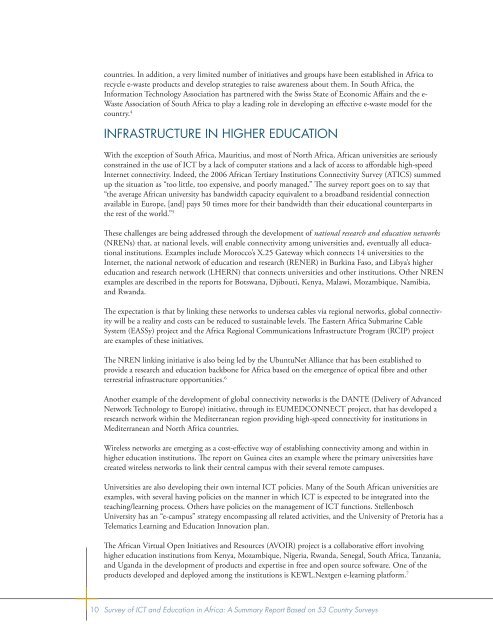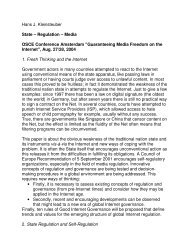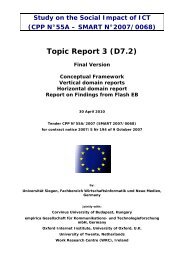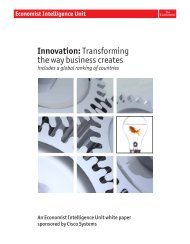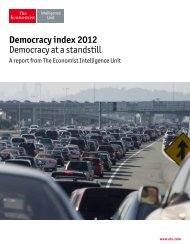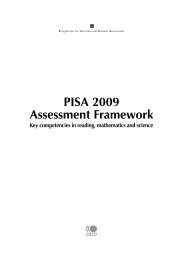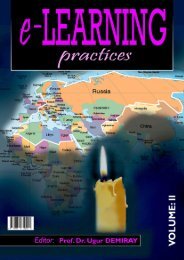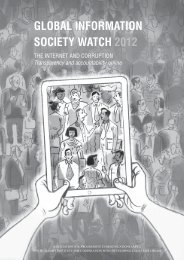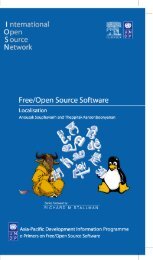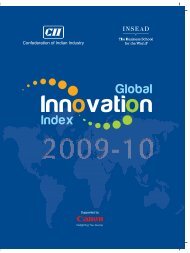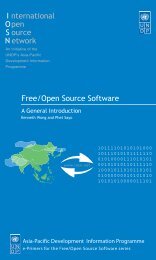SURVEY OF ICT AND EDUCATION IN AFRICA - infoDev
SURVEY OF ICT AND EDUCATION IN AFRICA - infoDev
SURVEY OF ICT AND EDUCATION IN AFRICA - infoDev
- No tags were found...
Create successful ePaper yourself
Turn your PDF publications into a flip-book with our unique Google optimized e-Paper software.
countries. In addition, a very limited number of initiatives and groups have been established in Africa torecycle e-waste products and develop strategies to raise awareness about them. In South Africa, theInformation Technology Association has partnered with the Swiss State of Economic Affairs and the e-Waste Association of South Africa to play a leading role in developing an effective e-waste model for thecountry. 4Infrastructure in Higher EducationWith the exception of South Africa, Mauritius, and most of North Africa, African universities are seriouslyconstrained in the use of <strong>ICT</strong> by a lack of computer stations and a lack of access to affordable high-speedInternet connectivity. Indeed, the 2006 African Tertiary Institutions Connectivity Survey (ATICS) summedup the situation as “too little, too expensive, and poorly managed.” The survey report goes on to say that“the average African university has bandwidth capacity equivalent to a broadband residential connectionavailable in Europe, [and] pays 50 times more for their bandwidth than their educational counterparts inthe rest of the world.” 5These challenges are being addressed through the development of national research and education networks(NRENs) that, at national levels, will enable connectivity among universities and, eventually all educationalinstitutions. Examples include Morocco’s X.25 Gateway which connects 14 universities to theInternet, the national network of education and research (RENER) in Burkina Faso, and Libya’s highereducation and research network (LHERN) that connects universities and other institutions. Other NRENexamples are described in the reports for Botswana, Djibouti, Kenya, Malawi, Mozambique, Namibia,and Rwanda.The expectation is that by linking these networks to undersea cables via regional networks, global connectivitywill be a reality and costs can be reduced to sustainable levels. The Eastern Africa Submarine CableSystem (EASSy) project and the Africa Regional Communications Infrastructure Program (RCIP) projectare examples of these initiatives.The NREN linking initiative is also being led by the UbuntuNet Alliance that has been established toprovide a research and education backbone for Africa based on the emergence of optical fibre and otherterrestrial infrastructure opportunities. 6Another example of the development of global connectivity networks is the DANTE (Delivery of AdvancedNetwork Technology to Europe) initiative, through its EUMEDCONNECT project, that has developed aresearch network within the Mediterranean region providing high-speed connectivity for institutions inMediterranean and North Africa countries.Wireless networks are emerging as a cost-effective way of establishing connectivity among and within inhigher education institutions. The report on Guinea cites an example where the primary universities havecreated wireless networks to link their central campus with their several remote campuses.Universities are also developing their own internal <strong>ICT</strong> policies. Many of the South African universities areexamples, with several having policies on the manner in which <strong>ICT</strong> is expected to be integrated into theteaching/learning process. Others have policies on the management of <strong>ICT</strong> functions. StellenboschUniversity has an “e-campus” strategy encompassing all related activities, and the University of Pretoria has aTelematics Learning and Education Innovation plan.The African Virtual Open Initiatives and Resources (AVOIR) project is a collaborative effort involvinghigher education institutions from Kenya, Mozambique, Nigeria, Rwanda, Senegal, South Africa, Tanzania,and Uganda in the development of products and expertise in free and open source software. One of theproducts developed and deployed among the institutions is KEWL.Nextgen e-learning platform. 710Survey of <strong>ICT</strong> and Education in Africa: A Summary Report Based on 53 Country Surveys


